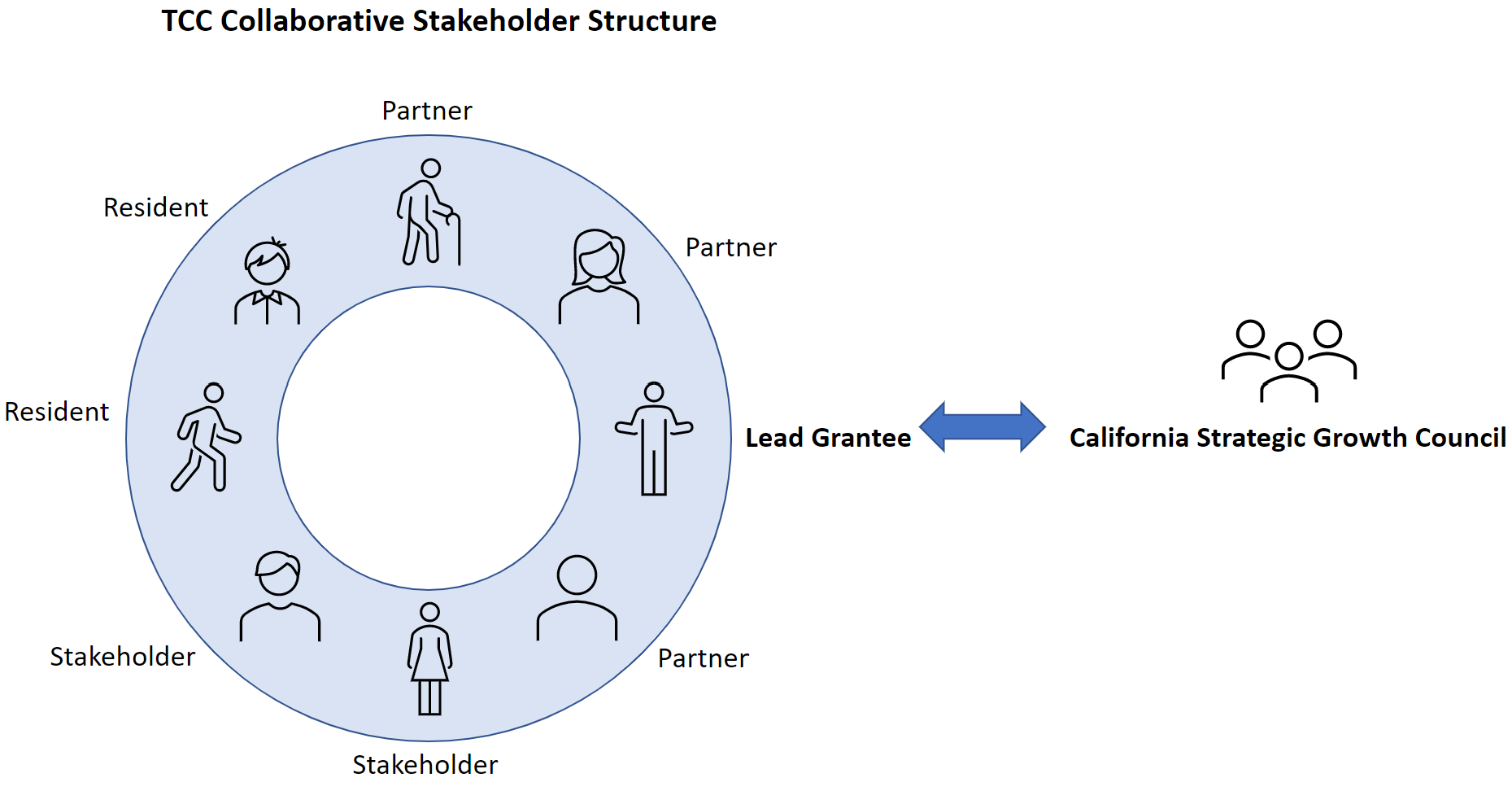SGC Catalyst Model Community-Driven Investment Model: Collaborative Governance
Collaborative governance allows for achieving what an individual sector cannot achieve independently. Through collaborative governance, resources can be delivered and directed in a way that aligns with specific community needs and concerns, leading to more efficient, effective, and equitable outcomes.
As an inclusive model of decision-making, collaborative governance can reshape the power structures that have led to the historical and ongoing marginalization and exclusion of communities of color and low-income populations. In this way, collaborative governance can restore trust in state institutions and improve the ability of governments to enact policy and provide services that best improve outcomes and quality of life for all residents.
A collaborative governance structure is essential for meaningful community engagement and accountability. To be effective while advancing equity, a joint governance structure must include significant and diverse representation, empower community members in the decision-making process, and include robust mechanisms for transparency, oversight, and accountability.
Outcomes
- Community empowerment and oversight of investment
- Transparency and accountability to original project goals
- Iterative process to identify project refinement, new opportunities, and context-sensitive solutions
- Trust-building between communities and local government
- Formation of multi-sectoral partnerships that pursue future initiatives
How to Do This
The following examples draw on existing SGC program guidelines. The examples are intended as a guide and can be adapted to suit the needs of particular programs and contexts.
Require applicants to establish a collaborative and representative governance body with authority to oversee planning and implementation
Description of Community Engagement during Proposal Development
Priority will be given to TCC Proposals that meaningfully include residents and key stakeholders during proposal development, from the visioning process to selecting Strategies and Projects, using proven methods of community engagement such as Participatory Budgeting or the creation of an Advisory Board. This section of the Community Engagement Plan must describe, at a minimum:
- Key stakeholders and residents, including any existing neighborhood organizations or advisory councils serving the Project Area;
- Recent history of resident engagement in neighborhood issues of the proposed Project Area, including involvement in any planning or community development activities administered by the local government or other administrative entities; and
- Process used to identify the needs of residents and other stakeholders during the TCC Proposal development phase, selection of proposed projects, and, if applicable, the relationship of this process to any pending planning activities or public improvements for the Project Area within the time frame of implementation.”
SOURCE: Transformative Climate Communities Round 4 Program Guidelines (p. 22)
Require applicants to establish a collaborative and representative governance body with authority to oversee planning and implementation
Collaborative Stakeholder Structure
The Lead Applicant and all Co-Applicants must form a Collaborative Stakeholder Structure to develop and submit one (1) application. The Collaborative Stakeholder Structure also should include residents and community-nominated members such as community-based organizations that are not Co-Applicants. The inclusion of residents and/or other community-nominated members in the Collaborative Stakeholder Structure is a requirement that can only be waived if there are extenuating circumstances and approval is granted by SGC. Applications will be evaluated on the degree to which they incorporate community leadership.
Partnership Agreement
Applicants must develop a Partnership Agreement signed by the Lead Applicant and all Co-Applicants that describes the governance, organization, and financial relationships of the Collaborative Stakeholder Structure.

SOURCE: Transformative Climate Communities Round 4 Program Guidelines (p. 7)
Require applicants to identify mechanisms to continuously inform and engage the community as well as to ensure ongoing participation of members of the community during the implementation of the project
Community Engagement
Applicants may allocate up to eight percent (8%) of their budget for eligible community engagement and outreach activities during grant implementation. The SGC recognizes that many effective community engagement and outreach strategies are cost-intensive. Funding requests that exceed the eight percent (8%) cap will be reviewed on a case-by-case basis during the Post-award Consultation.
To ensure that grant funds provide direct, meaningful, and assured benefits to disadvantaged communities, the TCC Program requires that Applicants work with community members and stakeholders through direct engagement. Applicants must involve residents and businesses from the Project Area and key stakeholders in all phases of TCC Proposal development and implementation. TCC Proposals should be designed to meet residents’ needs that are identified through a documented outreach and engagement process.
SOURCE: Transformative Climate Communities Round 4 Program Guidelines (p. 21)